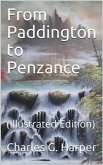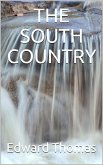Defoe’s “particular and diverting account of whatever is curious and worth observation” in his native country, told in a series of letters, was founded upon seventeen separate tours in the counties, and three larger tours through the whole country. He said he had “viewed the north part of England and the south part of Scotland five several times over,” and he thought it worth while to note what he saw, because, “the fate of things gives a new face to things; produces changes in low life, and innumerable incidents; plants and supplants families; raises and sinks towns; removes manufactures and trade; great towns decay and small towns rise; new towns, new palaces, and new seats are built every day; great rivers and good harbours dry up, and grow useless; again, new ports are opened; brooks are made rivers; small rivers navigable pools, and harbours are made where there were none before, and the like.” We are endeavouring, by little books published from time to time in this “National Library,” to secure some record of the changes in our land and in our manners as a people, and of what was worth record in his day we can wish for no better reporter than Defoe. Here, therefore, is Defoe’s first letter, which describes a Tour through the Eastern Counties as they were in 1722. It opens his first volume, published in 1724, which was entitled, “A Tour through the whole Island of Great Britain, Divided into Circuits or Journies. Giving a Particular and Diverting Account of whatever is Curious and worth Observation, viz., I. A Description of the Principal Cities and Towns, their Situation, Magnitude, Government, and Commerce. II. The Customs, Manners, Speech, as also the Exercises, Diversions, and Employment of the People. III. The Produce and Improvement of the Lands, the Trade and Manufactures. IV. The Sea Ports and Fortifications, the Course of Rivers, and the Inland Navigation. V. The Public Edifices, Seats and Palaces of the Nobility and Gentry. With Useful Observations upon the Whole. Particularly fitted for the Reading of such as Desire to Travel over the Island. By a Gentleman.” The Second Volume of the Tour was published in June, 1725; and the Third Volume, giving a Tour through Scotland with a Map of Scotland by Mr. Moll, followed in August, 1726, completing the record of what Defoe called “a tedious and very expensive five years’ Travel.” However tedious the travel may have been, Defoe’s account of it is anything but tedious reading. The change of times is in this letter vividly illustrated in this volume by Defoe’s account of life as he found it in the undrained Essex marshes. Life in them was so unhealthy that the land was cheap, men thus were tempted to take fevers for grazing and corn-growing. They became fairly acclimatised, but when they brought their wives in fresh and healthy from the uplands the women sickened and perished so fast, that it was common to find a man with his sixth or eighth wife, and Defoe was told of an old farmer who was living with his twenty-fifth wife, and had a son about thirty-five years old, who had been married to about fourteen wives. Custom had even dulled the sense of this horrible state of things until the frequent change of wives became a local joke.
Bitte wählen Sie Ihr Anliegen aus.
Rechnungen
Retourenschein anfordern
Bestellstatus
Storno









